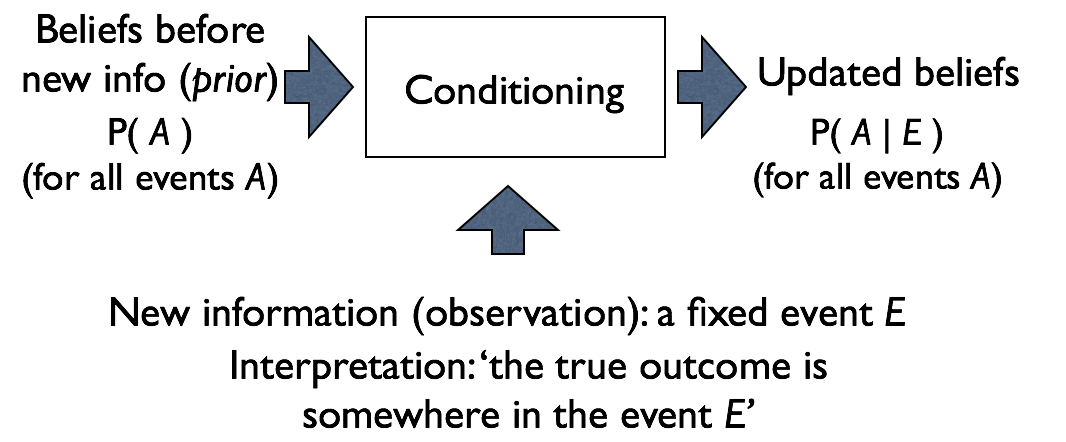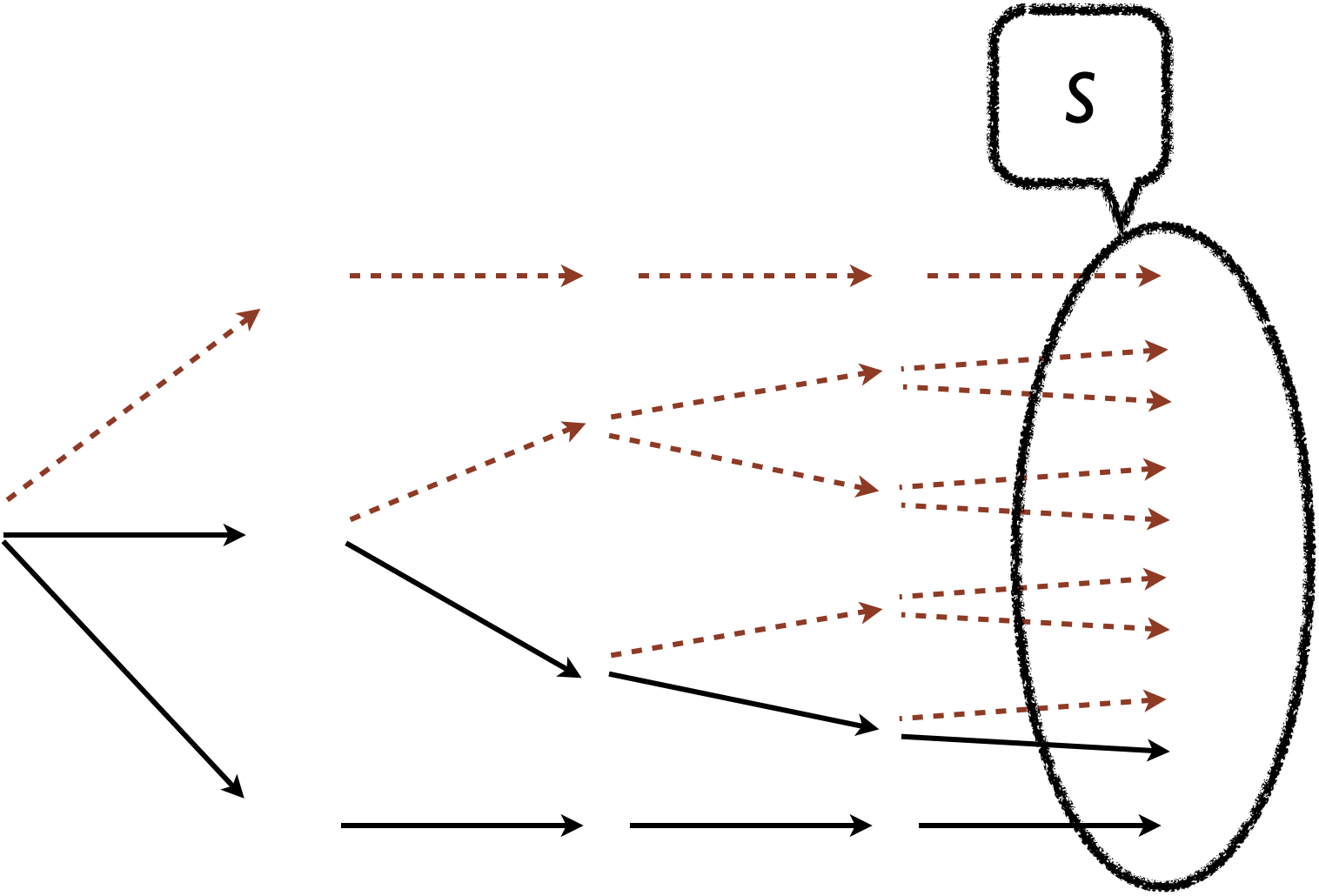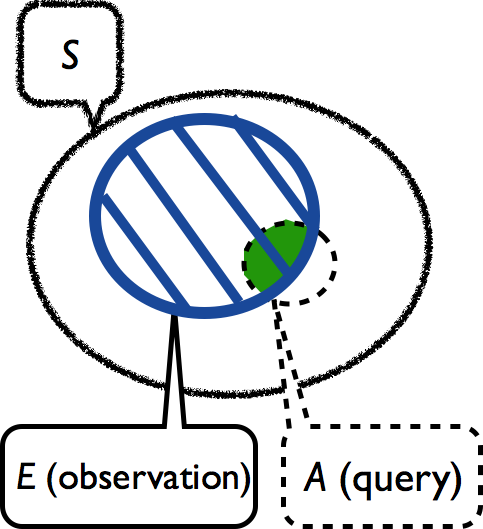Conditioning
Outline
Topics
- Intuition on conditioning
- A conditional probability is a probability.
Rationale
- Conditioning is the workhorse of Bayesian inference!
- Used to define models (as when we assigned probabilities to edges of a decision tree)
- And soon, to gain information on latent variables given observations.
Conditioning as belief update
Key concept: Bayesian methods use probabilities to encode beliefs.

We will explore this perspective in much more details next week.
A conditional probability is a probability
The “updated belief” interpretation highlights the fact that we want the result of the conditioning procedure, \(\mathbb{P}(\cdot | E)\) to be a probability when viewed as a function of the first argument for any fixed \(E\).
Intuition behind conditioning


- For a query even \(A\), what should be the updated probability?
- We want to remove from \(A\) all the outcomes that are not compatible with the new information \(E\). How?
- Take the intersection: \(A \cap E\)
- We also want: \(\mathbb{P}(S | E) = 1\) (last section)
- How? Renormalize:1 \[\mathbb{P}(A | E) = \frac{\mathbb{P}(A, E)}{\mathbb{P}(E)}\]
Footnotes
In the equation, we use comma to denote intersection, i.e., \((A \cap E) = (A, E)\).↩︎